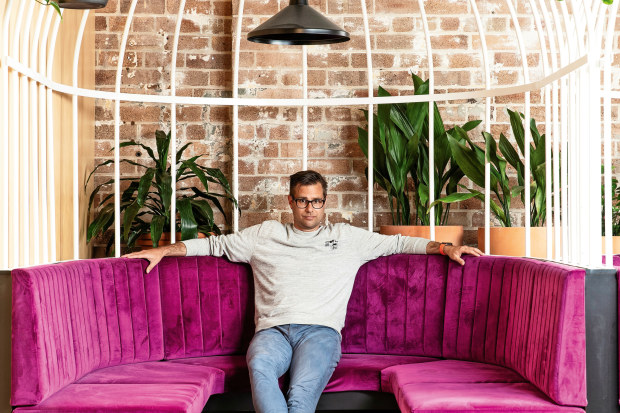“Investors are beating down the door looking for access to high-quality venture managers who can deliver consistently strong returns.”
The stats compiled by the AIC and investment data firm Preqin Pro found assets under management, or the value of investments across funds, had escalated from just $US300 million in December 2016 to $US3.8 billion in December 2019.
At the end of 2020 this figure had risen to $US5.8 billion, and then up further to $US6.5 billion by the end of the March quarter.
With increased interest in backing Australian start-ups from giant US funds like Insight Partners emerging as a strong theme throughout 2021, Mr El-Ansary said Blackbird and others had proven to backers and company founders that local VC was globally competitive.
“Venture capital has now reached a state of maturity in Australia, where the experience of local fund managers and the calibre of investment opportunities are on par with other leading jurisdictions around the world,” he said.
“We’ve demonstrated now that Australia can consistently produce great entrepreneurs who go on to create world-leading businesses. All of our new economic growth and job creation is attributable to the innovation economy and the role of fast growth technology businesses.”
Blackbird Partner Rick Baker said the sky-rocketing value of its assets under management could be trusted by interested parties, including potential backers of its new fund, as it was all based on deals, rather than estimates.
“We only set our valuations on arm’s length third-party transactions, so it’s like the fundraising of Canva led by big institutional investors like T. Rowe Price – this is not us setting our own valuations,” he said.
“We’ve got companies with real earnings and real profits, so the value is there. We all know that tech is valued highly at this time, but that’s driven by the stock exchanges.”

Niki Scevak of Blackbird Ventures said the Sydney-based firm can hold its own alongside global giants such as Sequoia Capital and Accel. Louie Douvis
Fellow Blackbird partner Niki Scevak said the increased interest of global funds in backing Australian start-ups was not a worry for his fund, as it always looked to invest as early as possible in start-ups, which often counted out the international rivals.
He said that by building a relationship with company founders right at the beginning of the start-up’s journey, local investors could out-compete global brand name VCs.
“I would describe the competition as sort of segmenting between rounds, where early on it’s a local market of capital and then, as the company succeeds, it comes on to the radar of firms all around the world for the rounds of $10 million-plus,” Mr Scevak said.
“We’re not going to go head-to-head on brand with Sequoia Capital and Accel, but we can go head-to-head with a great relationship versus a global brand, and that is how we’ve been able to build these substantial ownership stakes and become true partners to the companies that we invest in.”
As well as Blackbird’s ongoing fundraising, some of the other biggest local VC funds are thought to be looking to close big new funds in 2022. Both AirTree Ventures and Square Peg Capital are on the funding trail, with Square Peg’s fifth fund tipped to be bigger than the $600 million figure raised for its fourth fund.
Mr El-Ansary said he expected investment into venture capital-backed businesses to continue to grow well into 2022 as Australia continues to focus on building an economy supported by innovation and new technology.
“”I expect Australia will attract more international VC funds into our market as they begin to recognise the depth of opportunity here and the fact that we need larger global VC firms to back later funding rounds for some of our best early stage businesses,” he said.
“When that happens we should celebrate the fact that Australia is among the leading innovation economies around the world.
“Institutional investors will continue to increase their allocation into venture strategies because they recognise that significant value creation is occurring outside of listed markets, and that the innovation ecosystem is fundamentally and permanently altering the operating environment around traditional industries across the whole the economy – and they want to be part of that transformation.”
Credit: Source link


Comments are closed.